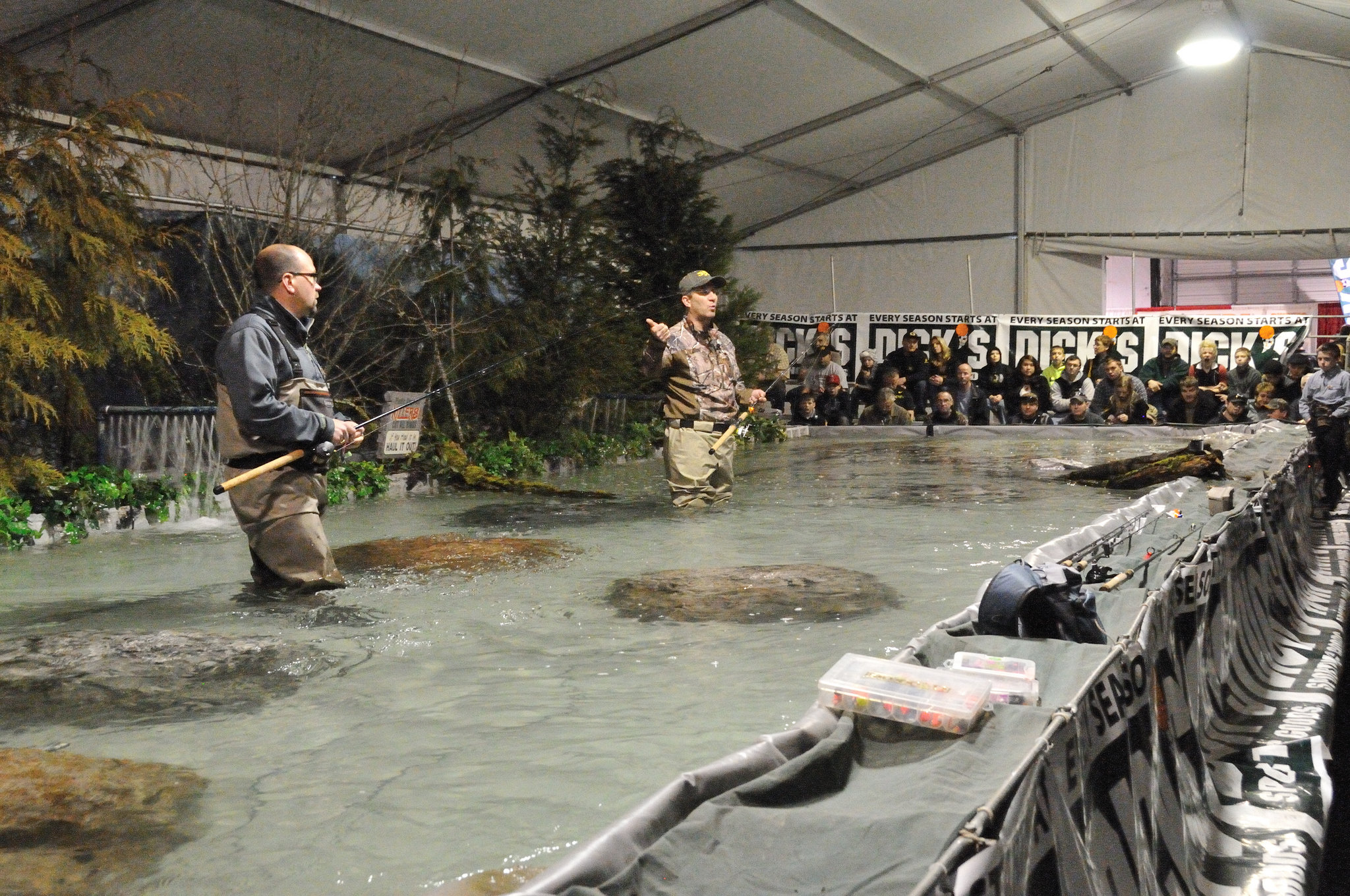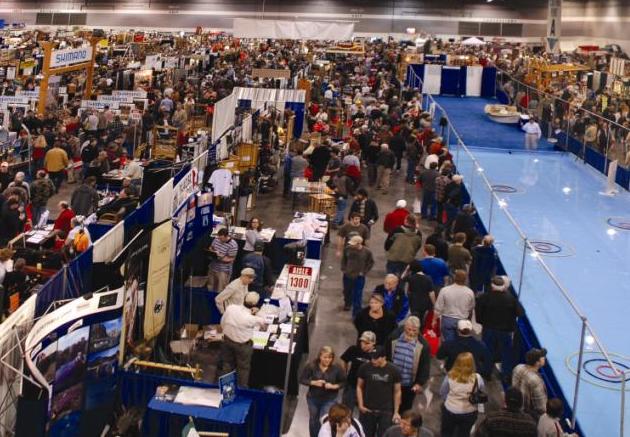Winter is a great time of the year. These days it seems there is snow to shovel in just about every part of the country, including Texas. Tossing wet, heavy snow aside is tough to beat, upstaged only by quartering tree limbs that have fallen across the driveway. Don’t stop short of the goal; it needs to be quartered, so put an edge on your maul and your axe; frozen wood splits more easily than it does when it’s warm. After that, tune up your generator, stock up on groceries, and fill the bathtub with water. That’s important in case of a power outage, especially if you’ve done a bogus tuneup on the generator.
Oh, de-ice the driveway, too.
Or scrap it all and head to a sportsman’s show. Winter is show time, and attending a sportsmen’s show is a far better use of time. Most of us have rigs with 4×4, so hit the clutch, shift your gear into 4-high, and get out of the house. It’s more fun perusing fishing tackle, rifles, shotguns, and other stuff, anyway. The consumer show circuit is vast, and that means there are lots of options from which to choose.
Many shows have indoor ponds where fishermen can cast the newest rods. Others feature indoor 3-D archery ranges for shooting the newest compound bows. Folks from different companies are on hand to demystify the tech-talk found in catalogs and on websites. (Titanium-carbo-nitride, the coating that makes fishing guides stronger, is sometimes more easily explained in person.) Enough vintage books to fill the open slots in your library’s shelves are available, as is sporting art to take up the extra wall space. Don’t worry about available space, you know you can always find room . . .
If last year’s hunting and fishing trips were a bust then there are outfitters and guides galore, some of whom will offer an option to set your new year right. Educational talks, conservation presentations, and seminars by interesting guest speakers are part of the fun. Don’t tell me about the labor pains, just show me the baby, so here it is: in the end you’ll be surrounded by other like-minded people. What’s not to like about all that?
If you work the show circuit like I did for many, many years, then your view is a mixed bag. Interacting with fellow sportsmen is the highlight, for sure, and when you’re talking fish/hunt those new friends become old friends pretty quick. But there is a mundane part to the shows, too. Registration contracts must be filled out well in advance, and every year they’re more complicated than before.
Once those contracts are submitted, the horse trading commences. You’ll want your booth positioned in high-trafficked zones. Perfectly executed bills of lading for the union workers are critical to ensure your booth ships from show to show.
Not much outside of your lunch can be brought on to the show floor, either. Tables, electricity, and carpets are rented for a fee. Heck, if you want to sit down you need to rent a chair.
Every coin has a heads and a tails, and your winning coin toss is after your booth is set up and you can walk the show. Let the fun begin.

Whether it’s a hunting or a fishing show, there’s something for everyone during the height of expo season.
I recall working one fly fishing show that was considered the busiest, most well-attended show in the country. During the previous bunch of weeks I’d already run through half a dozen fish/hunt shows in multiple states, and this singularly focused show promised to be a breeze. The bummer was that the last day of the show landed on the Super Bowl, so crowds would be light. Bad weather promised to keep the normally vigorous crowds at bay, but there would still be a several thousand fly rodders that would walk through the doors.
I never expected to learn a valuable life lesson while standing at one booth, though. I visited with a vendor who specialized in fly-tying products. All said and done, he had enough fur and feathers to tie well over a million flies. His inventory was complete with all of the basics, but he had some really cool items, too. He sourced unique hooks, many of which were handmade-in-England classics that were discontinued long ago. He had skins of hard-to-find golden pheasant capes, jungle cock necks, and more spools of tinsel than you’d find on 10,000 Christmas trees.
He had dubbing and tails, beads and weights, and the tagline on his sign was cheesy but spot-on: “If I don’t have it, you don’t need it.” Preach it, brother.
I was in the market for some moderate-length strung saltwater hackles and perused his offerings. His feathers were of decent quality, they were of a good value, and an ounce of ’em would carry me over for a few years.
A tall, thin man with reading glasses stood next to me. From the corner of his lips was a cigarette, and he smoked that butt so it had more ash hanging off the end than tobacco in the front. He searched for a dry fly neck—not one of the best quality, but an average grade for a reasonable fee. At the bottom of one pile he found a dun color that fit the bill.
“How much for this cape?” he asked the vendor.
“$25,” was the answer.
“I’ll give you $15.”
“$45.”
Now that’s a response you don’t hear every day! Fish on; I was hooked. I stepped closer to the haggling pair. I didn’t want to miss a word.

“He had skins of hard-to-find golden pheasant capes, jungle cock necks, and more spools of tinsel than you’d find on 10,000 Christmas trees.”
“How do you figure?” asked the customer. “That’s not what you’re supposed to say.”
“What am I supposed to say?” countered the vendor.
“You say $25, I say $15, you say $20, and we wind up in between.”
“I see,” said the vendor. “That’s what you want to happen so you can get a better deal. But that’s not how it works. I asked a fair price for my neck, and you countered, and we entered into a negotiation. In a negotiation, all bets are off.”
“Whatever,” said the customer. “Here’s your $25.”
“No,” said the vendor. “It’s $45.” And the customer paid it.
You know, you’ll see lots of good gear and hear interesting talks at a sportsman’s show. Beyond that, it’s a jump ball, with your guess being as good as mine.

